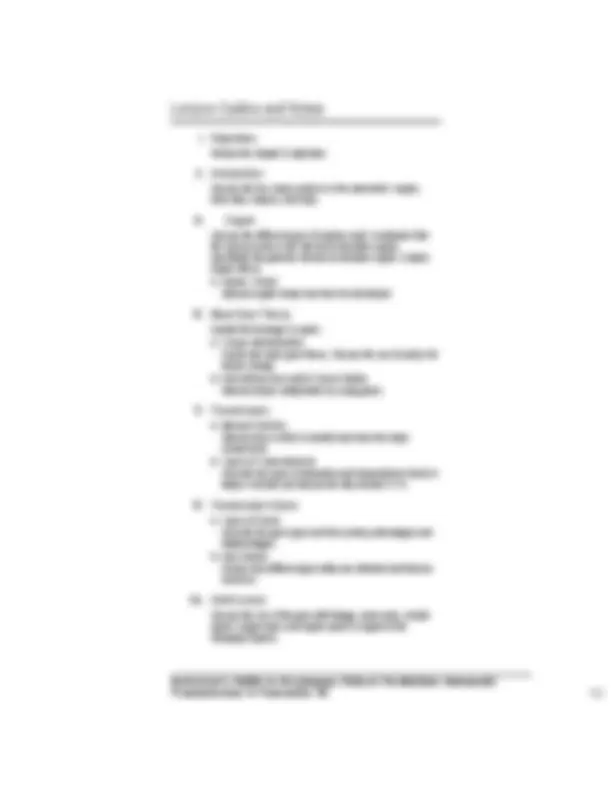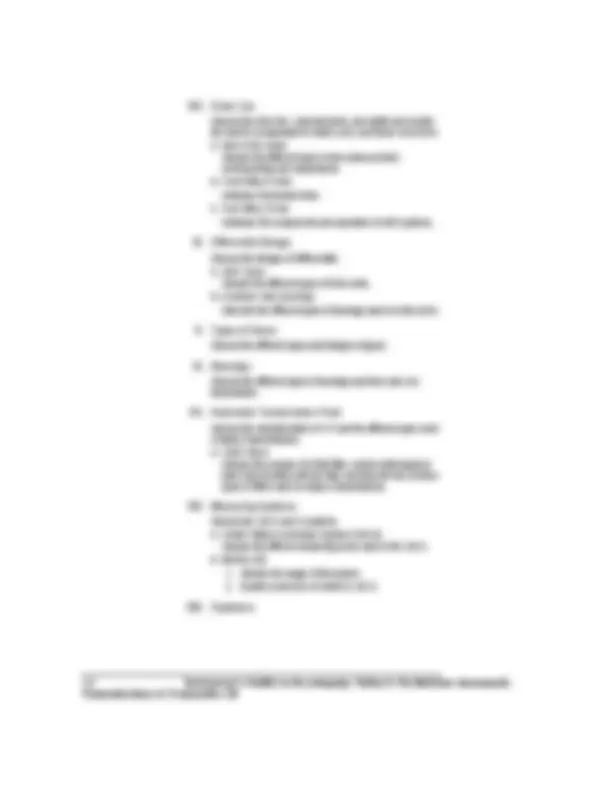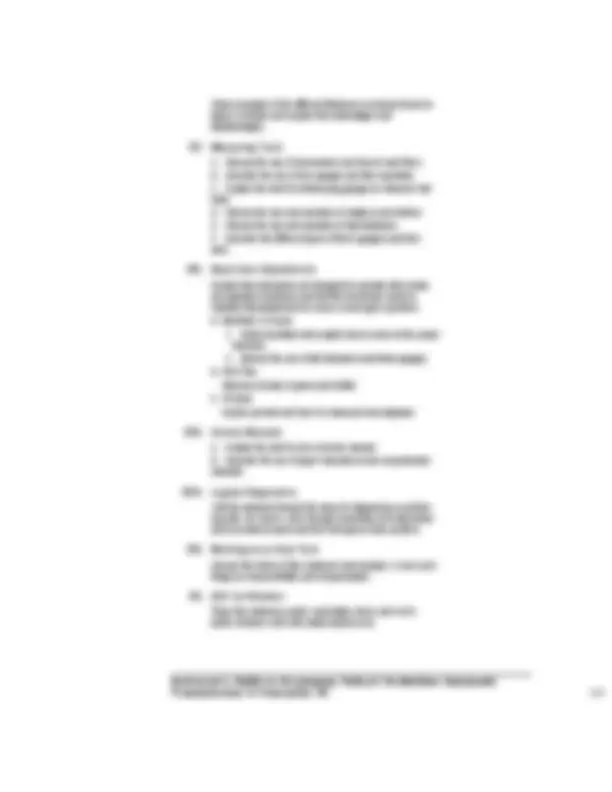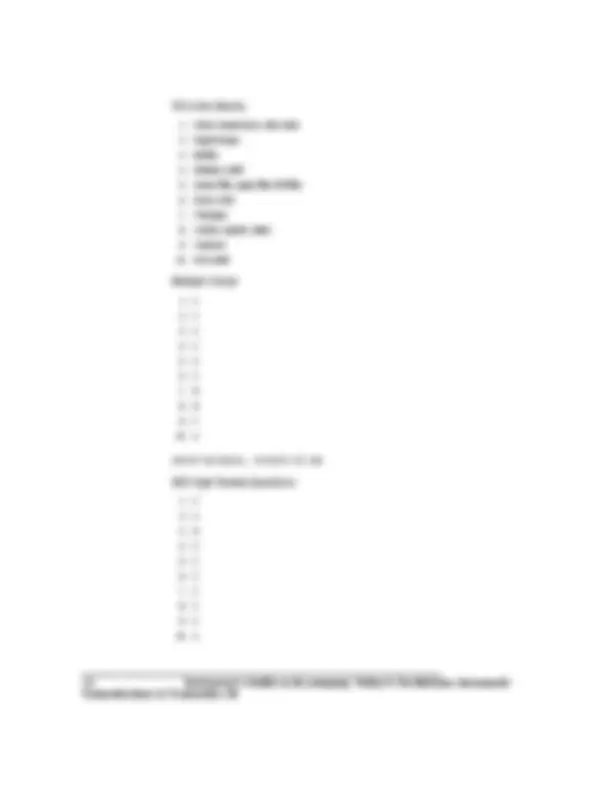






Study with the several resources on Docsity

Earn points by helping other students or get them with a premium plan


Prepare for your exams
Study with the several resources on Docsity

Earn points to download
Earn points by helping other students or get them with a premium plan
Community
Ask the community for help and clear up your study doubts
Discover the best universities in your country according to Docsity users
Free resources
Download our free guides on studying techniques, anxiety management strategies, and thesis advice from Docsity tutors
Material Type: Notes; Professor: Saxton; Class: Auto Transmissions/Transaxles; Subject: Automotive Technology; University: Community College of Philadelphia; Term: Spring 2005;
Typology: Study notes
1 / 8

This page cannot be seen from the preview
Don't miss anything!





Upon completion and review of this chapter, the student should be able to:Classroom Manual Objectives Identify the major components of a vehicle's drive train. State the purpose of a transmission. Describe the major differences between a transmission and a transaxle. Explain how a set of gears can increase torque. Define and determine the ratio between two meshed gears. Describe the basic operation of a planetary gearset. State the purpose of a torque converter assembly. Describe the differences between a typical FWD and RWD car. State the purpose of a differential. Identify and describe the various gears used in modern drive trains. Identify and describe the various bearings used in modern drive trains. Shop Manual Objectives List the basic units of measure for length, volume, and mass in the two measuring systems. Convert measurements between the SAE and the metric systems of units. Describe the different types of fasteners used in the automotive industry. Identify the major measuring instruments and devices used by technicians. Explain what these instruments and devices measure and how to use them. Describe the proper procedure for measuring with a micrometer. Read a vernier scale. Describe the measurements normally taken by an automatic transmission technician. Using math and measuring instruments, determine the corrective action to take when end clearances are not within specifications. Describe the different sources for service information that are available to technicians. Describe the requirements for ASE certification as an automotive technician and a master auto technician. 9
This chapter in the classroom manual covers the four parts of the drive train theory, including the engine, transmission, drive line, and drive axles. This chapter in the shop manual covers the basic tools and their uses. It also covers the two most commonly used measurements in the automotive field.
Classroom Manual, pages 13- Shop Manual, pages 43-
10 Instructor’s Guide to Accompany Today’s Technician: Automatic
Discuss the drive line, universal joints, and shafts and explain the need to compensate for wheel, axle, and frame movement. A. Rear Drive Axles Discuss the different types of rear axles and their corresponding rear suspensions. B. Front-Wheel Drive Introduce front-wheel drive. C. Four-Wheel Drive Introduce the components and operation of 4WD systems.
Discuss the designs of differentials. A. Axle Types Discuss the different types of drive axles. B. Common Axle Bearings Describe the different types of bearings used on drive axles.
Discuss the different types and designs of gears.
Discuss the different types of bearings and their uses in a transmission.
Discuss the characteristics of ATF and the different types used in today’s transmissions. A. Fluid Filters Discuss the purpose of a fluid filter, explain what happens when dirt circulates with the fluid, and describe the common types of filters used on today’s transmissions.
Discuss the USCS and SI systems. A. United States Customary System (USCS) Discuss the different measuring terms used in the USCS. B. Metrics (SI)
12 Instructor’s Guide to Accompany Today’s Technician: Automatic
Show examples of the different fasteners commonly found on today’s vehicles and explain their advantages and disadvantages.
A. Discuss the use of micrometers and how to read them. B. Describe the use of bore gauges and their operation. C. Explain the need for telescoping gauges to measure hole sizes. D. Discuss the use and operation of calipers and dividers. E. Discuss the use and operation of dial indicators. F. Describe the different types of feeler gauges and their uses.
Explain that most gears are designed to operate with certain pre-adjusted clearances and that the technician needs to maintain that adjustment to ensure correct gear operation. A. Backlash in Gears
A. Explain the need to use a service manual. B. Describe the use of paper manuals versus computerized manuals.
Talk the students through the steps for diagnosing a problem logically. Do it twice, once through something non-automotive (such as what to wear) and then through an auto problem.
Discuss the duties of the employee and employer. Cover such things as responsibilities and compensation.
Show the students a patch, registration book, and ASE’s and/or Delmar’s Web site (www.autoed.com). Instructor’s Guide to Accompany Today’s Technician: Automatic
1. The primary purposes of the drive train are to connect and disconnect the engine’s power, select different gear ratios, provide a means of reversing the movement of the vehicle, and supply power evenly to the wheels while the vehicle is making a turn. 2. Torque increases when a smaller gear drives a larger gear. The distance from the center of the gear to the point where the gear teeth contact the drive gear is different compared to the distance from the center of the driven gear and the point where the gear teeth contact. The torque will increase in proportion to the size difference of the drive gear compared to the driven gear. It is the basic principle of the lever. 3. Gear ratios are calculated by dividing the number of teeth on the driven gear by the number of teeth on the drive gear. They are expressed as a ratio, drive to driven. 4. Transmissions are equipped with different forward gear ratios to allow a changing amount of torque to be delivered to the drive wheels while the engine operates within its maximum torque curve. This increases the overall efficiency of the drive train. 5. The primary difference between a transaxle and a transmission is that a transaxle has all of the drive train parts housed in a single unit, while a transmission is mounted to the rear of an engine; all other transmission- related drive train components extend to the rear of the vehicle, and power is supplied to the rear wheels. 6. U-joints and CV joints allow the drive line to transmit power through the drive line in spite of the fact that drive line angles are constantly changing. 7. The differential, or drive axle assembly, receives torque from the transmission, where it multiplies the torque in proportion to the gear ratio of the ring gear and pinion. It also transmits power around a corner to the rear wheels. 8. The primary purpose of ATF is to transmit pressure to activate the transmission's brakes and clutches. It also serves as a fluid connector between the engine and the transmission, removes heat from the transmission, and lubricates the transmission’s moving parts. 9. The kinds of gears that are commonly found in automobiles are straight spur gears, helical gears, bevel gears, spiral bevel gears, and hypoid gears. 10. Ball-type and roller-type bearings are used wherever friction must be minimized. Instructor’s Guide to Accompany Today’s Technician: Automatic
1. Clutch, transmission, drive axles 2. Engine torque 3. Multiply 4. Distance, shaft 5. Screen filter, paper filter, felt filter 6. Driven, drive 7. Third gear 8. Turbine, impeller, stator 9. Transaxle 10. Drive shaft
1. C 2. C 3. A 4. C 5. A 6. C 7. B 8. B 9. C 10. A S H O P M A N U A L , P A G E S 6 7 - 6 8
1. C
2. A 3. B 4. C 5. C 6. C 7. C 8. C 9. C 10. A 16 Instructor’s Guide to Accompany Today’s Technician: Automatic